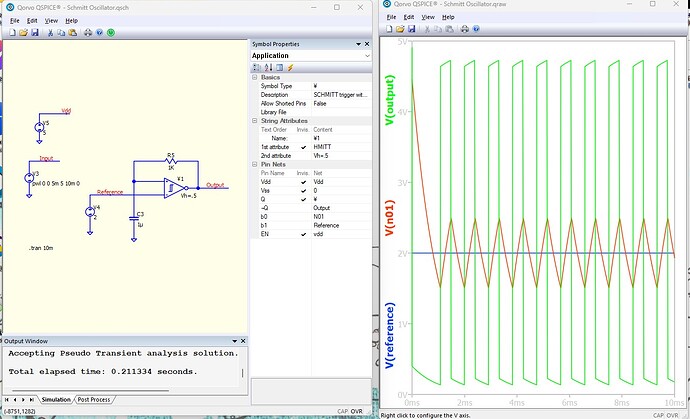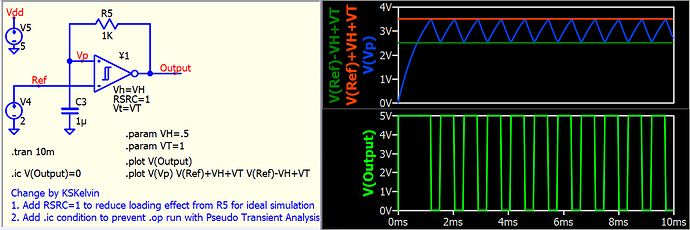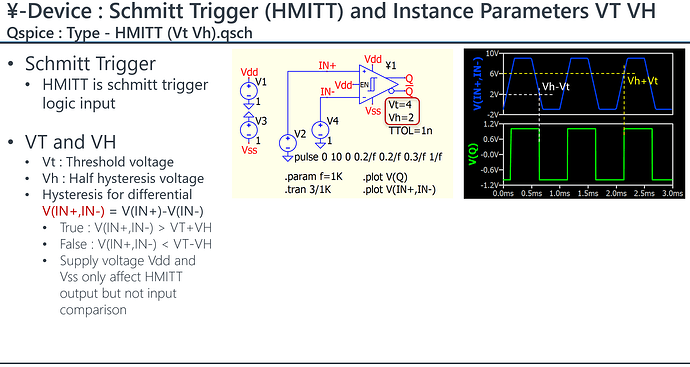I found some basic details on the Schmitt Inverter in an old conversation (Schmitt based Two Inverter Clock), but there are 2 things that are still strange.
- The original response from KSKelvin had reference to an attribute named Vt that sounds like the threshold and the circuit showed the – input connected to GND. My circuit (that seems to work as expected) is using the – pin as the threshold and when I add an attribute of Vt the circuit stops working. Have the Vt attribute and the – input been changed since the conversation a year ago?
- The output seems to be loaded by the 1k feedback resistor. Is this to be expected?
Schmitt Oscillator.qsch (5.7 KB)
Logic devices in general default with source and sink resistance at 100 ohms (refer to Qspice help). To eliminate loading effects, a lower value of RSRC is needed to prevent loading issues.
Here is an example to work with VT. Your experience may be related to not having an initial condition for the oscillation circuit. All SPICE simulations by default run a DC operating point before the transient. For oscillation circuits, the DC solution is generally uncertain, and it is better to assign it or run with the UIC option in .tran. In your simulation, you can see “Accepting Pseudo Transient analysis solution” in Output Window, this normally suggests simulator is having difficulty in getting DC solution and have to use this final approach in getting that.
Schmitt Oscillator - RSRC VH VT.qsch (5.3 KB)
Thanks for the informative response and schematic. While playing around with the schematic, it looks like the VT is applied with respect to the - input of the device, so (in this schematic) the threshold (VT) is 3V (V(Ref)+VT). The support from this group is great, but it would be nice if the documentation had more complete information.
Thanks,
Carl
I ran tests on VT and VH for the HMITT ¥-Device, and this is the relationship I observed. My device guideline has a few pages documenting the study of this parameter in the ¥-Device section. Perhaps you can take a look at my GitHub link for more information.


